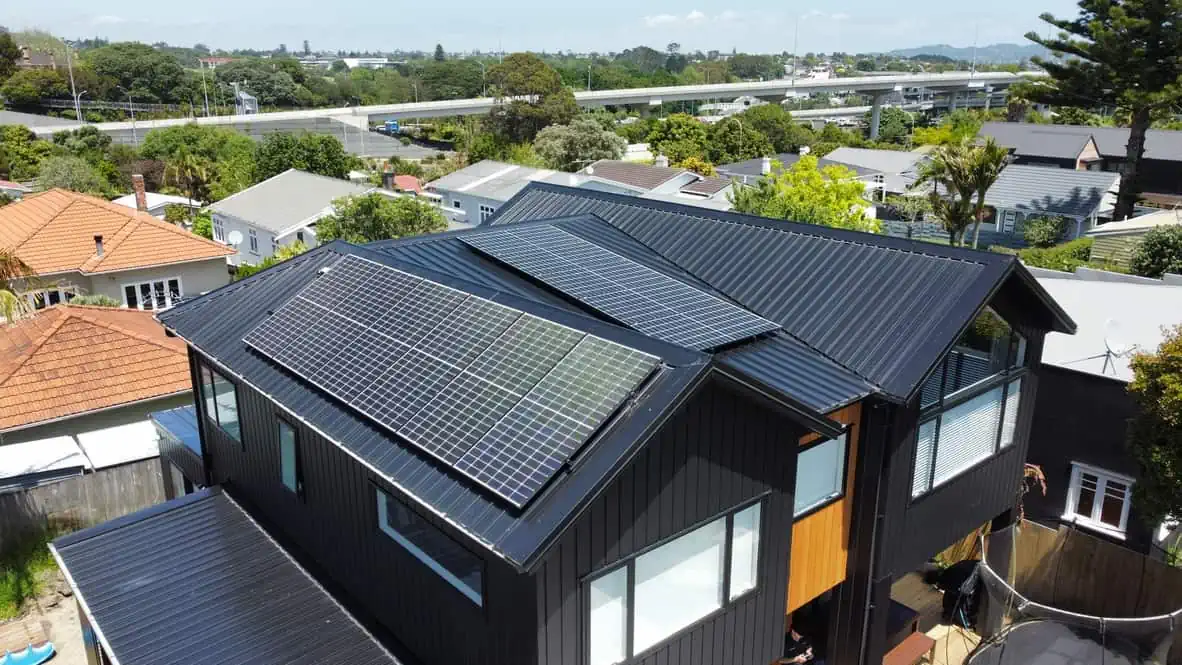Solar power is one of the most popular forms of renewable energy, harnessing the sun’s energy to produce electricity for homes, businesses, and industries. This guide breaks down the process of how solar power works, from capturing sunlight to powering up your everyday devices, making it easy to understand and follow along.
The Basics of Solar Energy: The Photovoltaic Effect
At the core of solar energy is a principle called the photovoltaic effect. This effect, first discovered in the 19th century, occurs when sunlight hits certain materials (like silicon) and creates an electric current. It’s the foundation of how solar panels generate electricity. Curious about the science? Learn more about it from EECA’s solar guide.
How Solar Power Systems Are Set Up
To understand how solar power turns sunlight into electricity, let’s look at the main components of a solar energy system:
- Solar Panels: The panels themselves contain solar cells, usually made from silicon. When sunlight hits these cells, it excites electrons, creating direct current (DC) electricity. More on how solar panels work can be found on EECA.
- Inverter: Since most household devices use alternating current (AC), an inverter converts the DC electricity from the panels into AC electricity. Explore inverter functionality on EECA.
- Electric Meter: This device measures how much electricity you consume and can track any extra electricity you send back to the grid. This process is known as net metering and is a great way to earn credit for any unused energy. Learn about net metering here.
- Battery Storage (Optional): Some systems include batteries, which store excess electricity for use during non-sunny times, like cloudy days or nighttime. Battery storage benefits explained.
Step-by-Step: How Solar Power is Generated and Used
Now that we know the parts, let’s go over how they work together to bring solar power into your home:
- Capturing Sunlight: When sunlight strikes the solar cells in the panels, it excites electrons, causing them to flow and generate DC electricity.
- Converting to AC Power: The inverter converts this DC electricity into AC electricity, making it suitable for household use.
- Powering Your Home: The AC electricity flows through your home’s electric meter and into the breaker box, distributing power to your appliances and lights.
- Net Metering: If your system generates more power than you need, the extra electricity can go back to the grid. Net metering helps you earn credits from the utility company, potentially lowering your energy bill. Get more info on net metering.
Types of Solar Power Systems
Solar power systems generally come in two types:
- Grid-Tied Systems: These systems connect directly to the electric grid. If you generate more electricity than you use, it goes back to the grid, and you can draw from the grid when the sun isn’t shining. Find more details on EECA.
- Off-Grid Systems: Off-grid systems use batteries to store all the electricity produced, making them ideal for remote areas. However, they require careful planning to meet energy needs without grid backup. Learn more about off-grid systems on Building.govt.nz.
Benefits of Using Solar Power
Switching to solar offers several significant advantages:
- Renewable Energy Source: Solar is abundant and renewable, making it an eco-friendly option. New Zealand’s renewable energy goals focus on reducing fossil fuel use and increasing clean energy.
- Cost Savings: Generating your own electricity can save you money, especially with rising energy costs. Find out about solar’s financial benefits on EECA.
- Environmental Benefits: Solar power reduces greenhouse gas emissions, which helps combat climate change. See how solar supports environmental goals.
- Energy Independence: With solar, especially if you add battery storage, you gain greater control over your energy needs and reduce reliance on the grid. Check out EECA’s information on battery storage.
Things to Consider When Installing Solar Power
Before installing solar panels, keep these points in mind:
- Location and Sunlight: A south-facing roof at the right tilt angle will receive optimal sunlight. Building.govt.nz provides tips on finding the best location.
- Shading: Trees, buildings, or other obstructions can reduce efficiency, so it’s essential to minimize shading.
- Local Regulations and Incentives: Check for any building codes, zoning laws, or incentives in your area. See solar policies and incentives on Beehive.govt.nz.
- System Size and Energy Use: Assess your household’s energy needs to determine the right system size. Use EECA’s energy assessment tool to get started.
Final Thoughts on Going Solar
Understanding how solar power works is the first step in deciding if it’s right for you. With its long-term savings, environmental impact, and energy independence, solar power can be a great choice for a more sustainable home. Plus, with the right system and setup, you can contribute to a cleaner, greener future.
